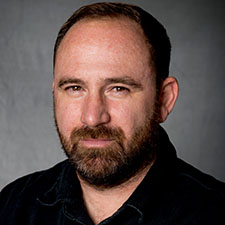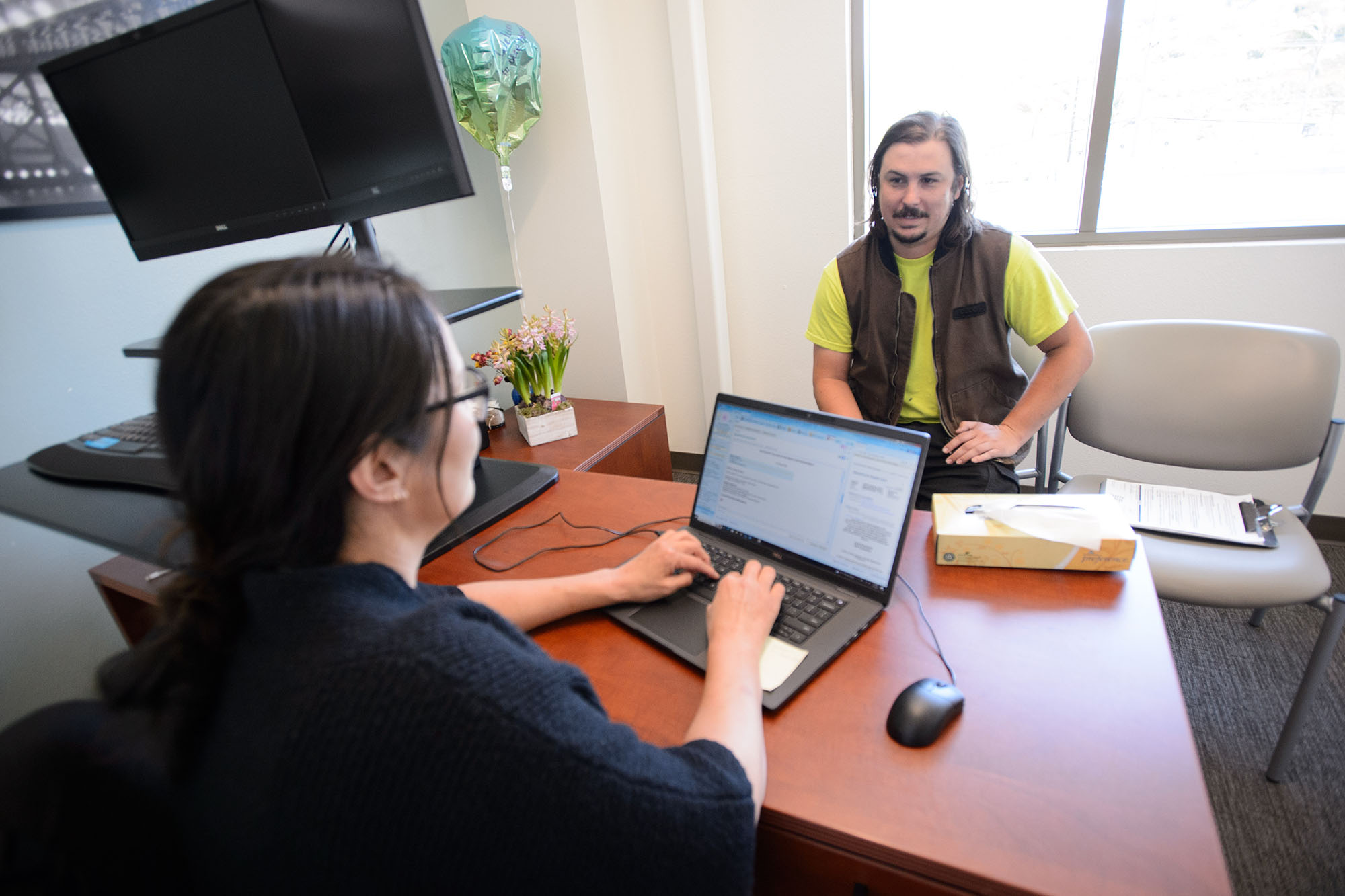|
Getting your Trinity Audio player ready…
|

Family medicine physician Justin Chin, DO, wanted to understand why fewer than 10% of his patients with diabetes were undergoing annual screening for early signs of preventable vision loss caused by damaged blood vessels within the eye — a condition known as diabetic retinopathy.
In the early months of the COVID-19 pandemic, rates of diabetes eye exams dropped to all-time lows at LifeLong Medical Care’s William Jenkins Health Center, a safety-net community clinic in the city of Richmond where Chin serves a predominantly monolingual Latino/x population. The low turnout wasn’t surprising then, as pandemic precautions deferred nonessential medical appointments. “But after the restrictions settled down, we never really saw the rates of diabetes eye exams increase,” Chin said.
To figure out why, Chin partnered with Spect, a Silicon Valley start-up that provides a comprehensive range of digital services for eye exam screenings. One of their goals was to investigate what barriers stood between patients in Richmond and their diabetic retinopathy exams. The other objective: Determine if the clinic could benefit from Spect’s portable eye exam device, an iPhone equipped with a specialized camera to capture retinal images.
Their research uncovered significant access and transportation challenges for most patients, many of whom are Spanish speaking, underinsured, and/or undocumented. Because the clinic lacked on-site eye exam equipment, all the diabetes retinopathy screenings were referred to external ophthalmologists outside Richmond. Many patients told Chin they weren’t comfortable navigating the health care system outside of the LifeLong network, which includes 14 primary care clinics and mobile providers serving patients in the East Bay. Patients said they couldn’t take time off work and reported they had no access to reliable transportation.

“We saw a great opportunity to provide in-house diabetes eye screenings using Spect,” Chin said.
With Spect, Chin or a medical assistant can conduct diabetes eye exams at his office. A virtual Spect team offers real-time guidance on operating the device during the examination. When the exam is complete, Spect experts analyze the images and provide a detailed report to the clinician.
Within a year of starting to use Spect, diabetes eye exams increased from roughly 10% to 40% of the patients at LifeLong William Jenkins Health Center whose doctors recommended the screening.
Closing the Gap
Diabetes is a chronic condition in which the pancreas cannot manufacture enough insulin, a hormone that controls sugar levels in the bloodstream after eating. Uncontrolled blood-sugar levels, in addition to leading to vision loss, cause cardiovascular disease, crippling nerve damage, kidney disease, and a host of other complications. Diabetes burdens an estimated 37 million people in the US. Another 96 million have a condition known as “prediabetes” and may be at elevated risk of being diagnosed with diabetes.
Even though diabetic retinopathy screenings are readily available, many people of color with diabetes still aren’t getting the care they need. More than half of Latino/x adults are expected to develop type 2 diabetes in their lifetime, according to the US Centers for Disease Control and Prevention. Diabetes complications are more severe for Latinos/x, who have higher rates of diabetes-related vision loss and blindness than other populations.
To increase equitable access to these eye exams, the California Health Care Foundation has invested $475,000 and other forms of support in Spect. CHCF uses its policy knowledge, delivery system partners, and deep understanding of Medicaid to help investees like Spect get traction in Medi-Cal. The foundation stays actively involved with its portfolio companies by serving on their boards and assisting with evaluations to strengthen their business planning.
“We believe Spect’s tech-savvy solution will help close the gap in diabetes eye exams for people on Medi-Cal, especially those who are Latino/x, monolingual, or live in rural areas,” said Vanessa Villaverde, MPA, MHSA, senior program investment officer at the CHCF Innovation Fund.
The investment in Spect is aimed at breaking down the barriers that have prevented many people from getting diabetes eye exams, and reducing the long-term negative effects of diabetes.

Transportation and limited access to specialty care have always been roadblocks. Eye screening is typically done with large, expensive, and stationary devices that require expertise in operation. With Spect’s portable devices and a virtual team, diabetes eye exams can be conducted on-site by primary care doctors, nurses, or medical assistants at community clinics.
“We also see the potential of Spect being deployed by street medicine teams to provide diabetes eye exams to people experiencing homelessness in California,” Villaverde said.
For primary care doctors, Spect is like having an eye expert in their pocket. Spect’s specialized camera is attached to an ordinary iPhone that can be used by medical doctors like Chin, as well as non-licensed providers. A remote Spect team works with these providers in advance and in real time to coach them on using the camera and capturing images that are suitable for diagnostic purposes. After the images are recorded, Spect clinicians review them and deliver diagnostic reports.
A Small Device with Big Potential
A trio of founders affiliated with Stanford University spearheaded Spect in 2017: Ankur Gupta, MD, MS, an eye surgeon at the medical school; Theodore Leng, MD, MS, director of clinical and translational research and the director of ophthalmic diagnostics at the school’s Department of Ophthalmology; and engineer and entrepreneur Michael Leung, MS.
Leung, Spect’s chief operating officer, was working toward his PhD in electrical engineering at Stanford when he met Gupta and Leng. Leng was concerned that many of his patients didn’t make an appointment for a screening until they were already exhibiting problems such as eye redness, blurred vision, or loss of vision.
“That got us brainstorming around how we can catch these patients earlier, before complications arise,” Leung said.
That’s when they teamed up with Gupta, who had been working on affordable hardware devices with his grandfather in India to help the underserved populations access eye exams, and the idea for Spect was born.
“If we could use a version of Gupta’s low-cost camera and deploy it en masse, we could really have a big impact,” Leung said.
Seeing that they could radically increase access to annual eye exams, Leung dropped out of his PhD program to focus full-time on Spect.
Spect has since grown to sell its diagnostic camera and services to 130 providers in six states, including Federally Qualified Health Centers, primary care physicians, and independent physician associations.
Spect’s relationship with providers is analogous to a blood diagnostic lab. The providers don’t need to know how to analyze the blood; they just need to get a sample and send it out. With Spect, the provider connects to a Spect-certified ophthalmic technician, who helps the provider navigate the exam. After the image has been uploaded, ophthalmologists and optometrists interpret them and send a diagnostic report.
“The provider doesn’t even need to know what the interior of an eye is supposed to look like,” Leung said.
The Eye As a ‘Powerful Predictive Biomarker’
While Spect is primarily used to screen for diabetic retinopathy, the company is examining ways to harness artificial intelligence (AI) to take advantage of the rich health data that can be found in the eye. Leung refers to the eye as the “check engine light of the body,” and a “very powerful predictive biomarker.”
In addition to using AI to predict a person’s eye health by screening for glaucoma or age-related macular degeneration, Leung envisions using the eye exams to detect the early stages of Parkinson’s disease and Alzheimer’s disease and to spot risk factors for heart attack and stroke.
Leung imagines Spect will be a common consumer device in the home.
“I’d love to see this in your medicine cabinet at home, where it can be used on yourself or on a family member,” Leung said.
At LifeLong, Spect has helped Chin turn his clinic into a one-stop shop for diabetes eye exams, and he’s able to see between eight and 10 people back-to-back. On Spect clinical days, Chin takes advantage of the 15 minutes it takes for a patient’s eyes to dilate by performing what he calls “diabetic tune-ups,” a whole-person health checkup, focusing on glycemic control, cataracts, and high blood pressure, and referring patients to healthy eating classes as needed.
“We use that time to check for diabetes and other health issues,” Chin said. “The patients love it.”
Authors & Contributors

Brian Rinker
Brian Rinker is a freelance writer and journalist. He covers digital health, public health, child welfare, start-ups, and venture capital. His work has been published by Kaiser Health News, Health Affairs, The Atlantic, Men’s Health, and San Francisco Business Times. Brian received master’s degrees in journalism and public health from UC Berkeley.

Christopher Che
Physics at the University of Chicago and engineering at the University of Michigan were hardly the pedigree studies for your typical photographer. While Christopher Che has had a camera in his hands since he was 10 and shot for local news and advertising agencies in college, he spent most of his career in boardrooms of Fortune 500 companies pitching emerging technologies innovated in Silicon Valley.
Serendipity brought him back to photography, and now he enjoys capturing disrupters, creators, and big thinkers, as well as significant moments in time. Located in San Francisco, he has covered assignments globally from rural Haiti to Hong Kong to Morocco as well as extensively in Europe and the US.



